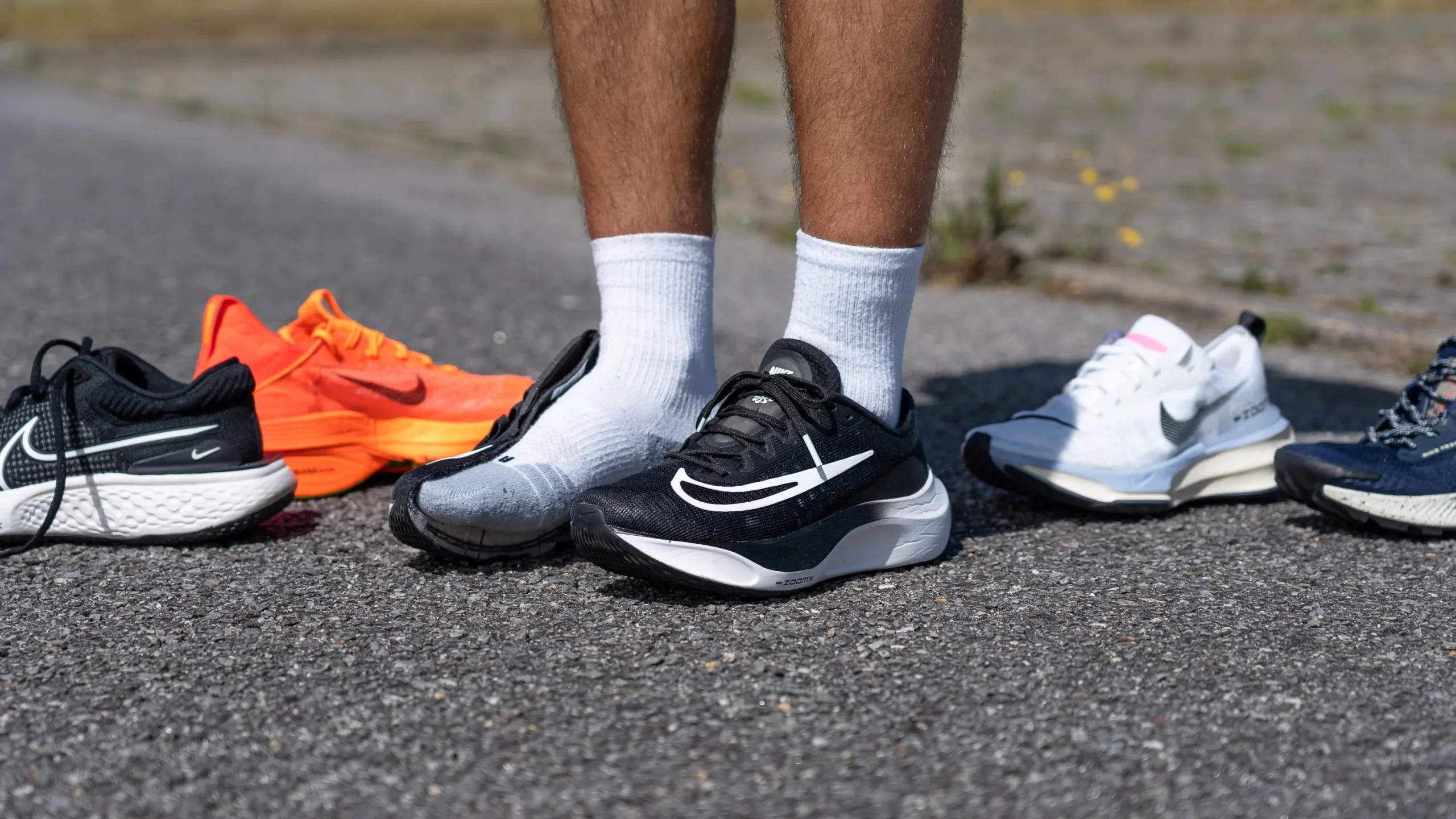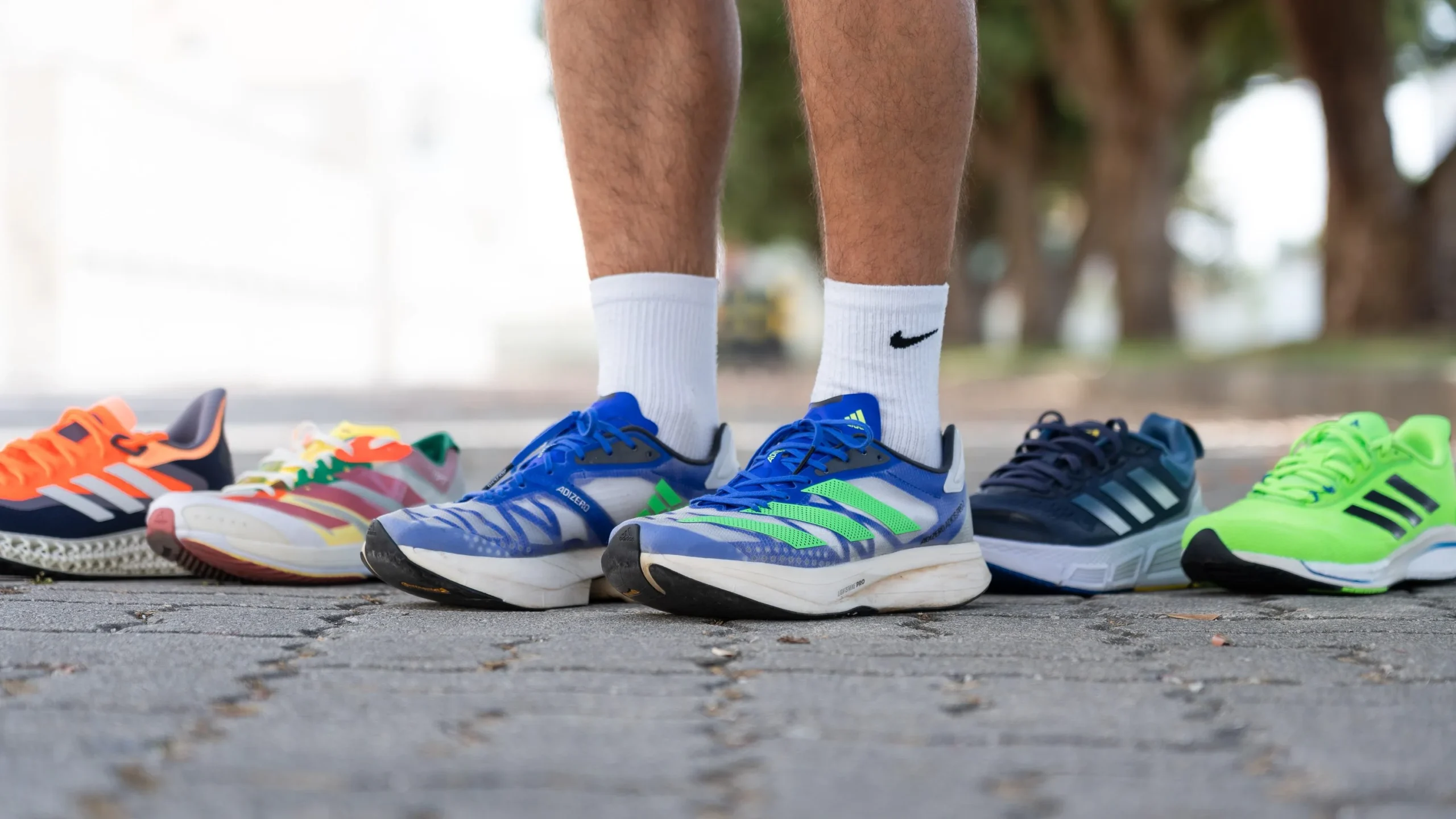Running shoes can make or break your training.
Many runners ask: Are Nike or Adidas better for running?
From my experience as a long-distance runner and gear tester, both brands shine in different areas.
This guide gives you a clear, test-based comparison so you can choose with confidence.
Table of Contents
- Why the Right Running Shoe Matters
- Nike Running Shoes: Key Features
- Adidas Running Shoes: Key Features
- Side-by-Side Comparison Table
- How to Choose Based on Running Style
- FAQ: Nike vs Adidas Running
- Conclusion
Why the Right Running Shoe Matters
The right shoe supports cushioning, stability, energy return, and injury prevention.
Pick according to distance, pace, pronation, and surface—not brand loyalty.
Core checks: cushioning level, ride feel (soft vs snappy), weight, upper comfort, outsole grip, and durability (miles).
Nike Running Shoes: Key Features
Reputation: race-day speed and lightweight innovation.
Flagship tech:
- ZoomX foam (Vaporfly/Alphafly/Invincible) – elite-level energy return.
- React foam (Pegasus/Infinity) – balanced daily cushioning.
- Air Zoom units – snappy toe-off.
- Flyknit/Flywire uppers – breathable lockdown.

Best fits: tempo runs, intervals, races, and neutral runners who want a springy, propulsive ride.
👉 Browse models on Nike Running.
Adidas Running Shoes: Key Features
Reputation: consistent comfort and durable traction.
Flagship tech:
- Boost foam (Ultraboost/Supernova) – plush, resilient comfort.
- Lightstrike/Lightstrike Pro (Adizero series) – lightweight speed foams.
- EnergyRods/Carbon plates – race efficiency in Adizero Adios Pro.
- Continental™ rubber – excellent wet/dry grip and longevity.

Best fits: daily mileage, mixed conditions, runners who prefer a stable, cushioned, and durable feel.
👉 See options on Adidas Running.
Side-by-Side Comparison Table
| Dimension | Nike (typical) | Adidas (typical) |
|---|---|---|
| Ride feel | Lively, high rebound (ZoomX/air units) | Plush-stable (Boost) or light-snappy (Lightstrike) |
| Best use cases | Tempos, intervals, race day, neutral runners | Daily training, long runs, varied weather |
| Uppers | Breathable Flyknit, performance lockdown | Supportive engineered mesh, secure heel counters |
| Outsole durability | Good; varies by model | Very strong with Continental™ rubber |
| Stability options | Mild guidance in some models (e.g., Structure) | Consistent midfoot/heel support in many trainers |
| Value over time | Great performance per gram | Great miles-per-pair lifespan |
How to Choose Based on Running Style
If you’re a speed-focused runner (5K–marathon PRs):
- Start with Nike Vaporfly/Alphafly or Adidas Adios Pro; try both for plate feel.
- For tempo days: Nike Zoom Fly/Tempo or Adidas Boston.
If you’re building base mileage / easy long runs:
- Adidas Ultraboost/Supernova or Nike Invincible/Infinity/ Pegasus.
If you need dependable grip in rain:
- Adidas with Continental™ outsole has the edge.
If you want the springiest ride:
- Nike ZoomX models often feel more propulsive.
Fit tip: Nike can feel slightly narrower; Adidas often feels roomier. Always test true-to-size vs half-up.
FAQ: Nike vs Adidas Running
Q1: Which brand is better for beginners?
✅ Either. Choose comfort and fit first: Pegasus/Infinity (Nike) or Supernova/Ultraboost (Adidas).
Q2: Which lasts longer for daily miles?
👉 Durability is model-specific, but Adidas with Continental™ rubber usually wears slower.
Q3: Which is faster for races?
✅ Both make world-class supershoes: Vaporfly/Alphafly vs Adios Pro. Try both; plate geometry and foam feel differ.
Q4: I overpronate—what should I try?
👉 Look at mild-stability options like Nike Structure/Infinity or Adidas Solar/Support lines. Always combine with a gait check.
Conclusion
Are Nike or Adidas better for running?
- Choose Nike if you want the springiest, race-ready feel and love lightweight speed.
- Choose Adidas if you want durable grip, steady cushioning, and all-weather mileage.
The best brand is the one that fits your foot and your training block. Try on both, jog-test them, and pick the pair that disappears under you.

